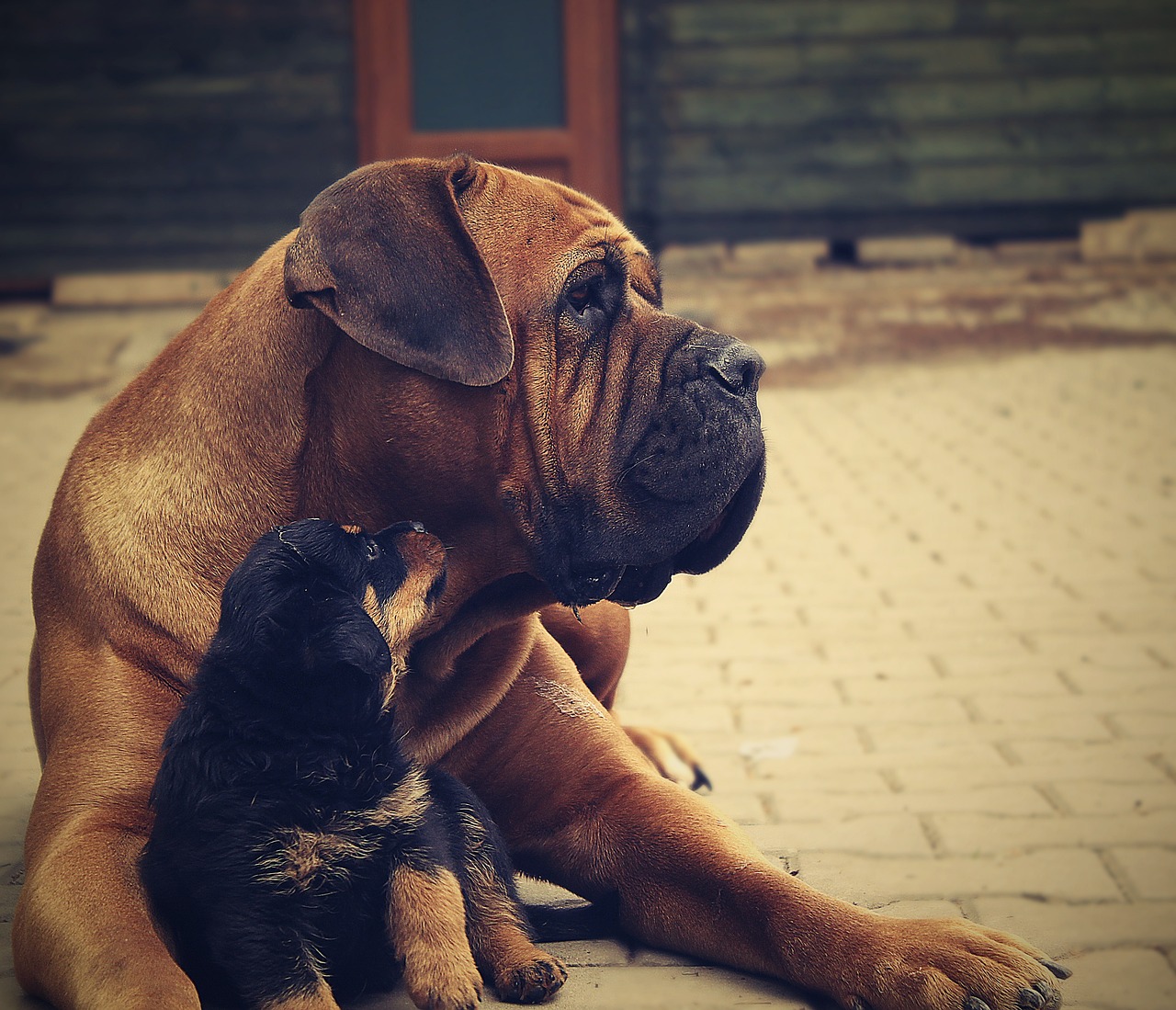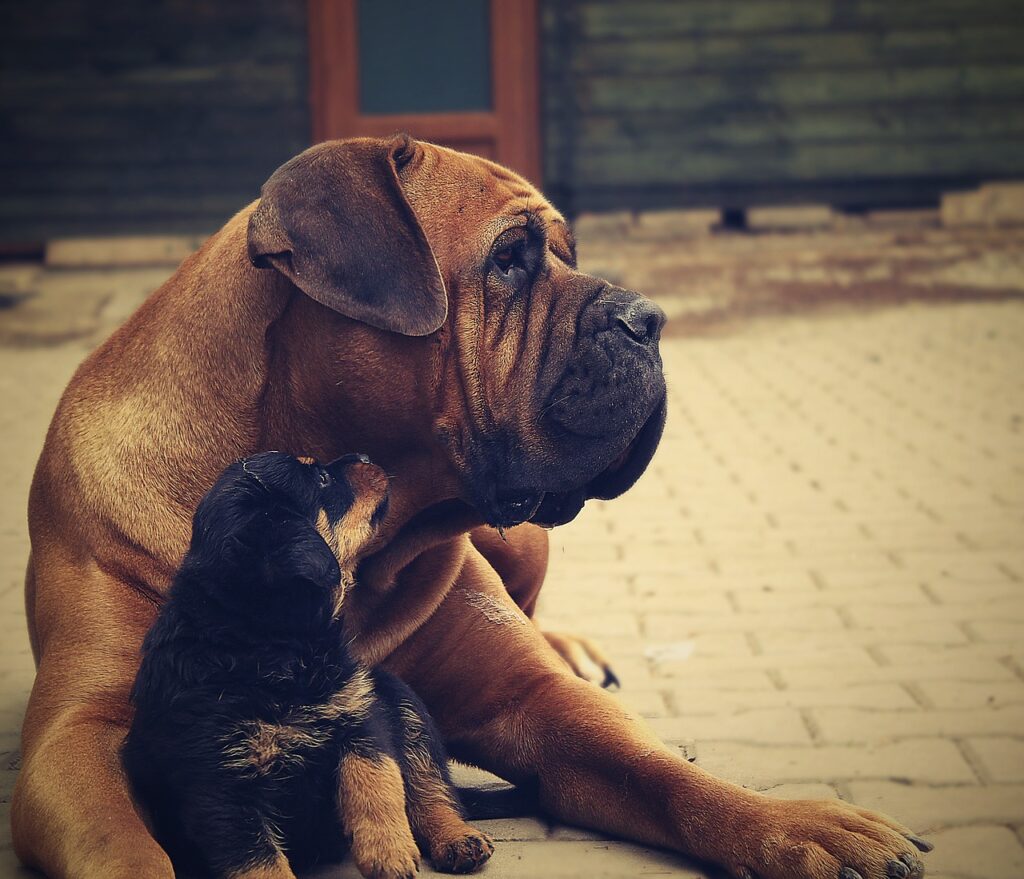
If you’re a dog owner who wants to ensure the safety and well-being of your furry friend during activities and enrichment, then you’ve come to the right place. It’s natural to want the best for your beloved companion, and in this article, we’ll explore some essential tips and considerations to help you keep your dog safe and healthy while they enjoy their favorite activities and enrichment. From providing a suitable environment to monitoring their interactions, we’ll cover all the bases so that you can have peace of mind knowing that your dog is thriving and protected.
Choosing the Right Activities
Consider your dog’s breed and size
When choosing activities for your dog, it’s important to consider their breed and size. Different breeds have different energy levels and exercise needs. For example, high-energy breeds like Border Collies may require more intense activities such as agility training or long runs, while smaller breeds like Chihuahuas may prefer shorter walks or indoor play sessions. By taking into account your dog’s breed and size, you can better select activities that match their physical abilities and interests.
Assess your dog’s physical capabilities
Before engaging in any activities, it’s crucial to assess your dog’s physical capabilities. Consider their age, fitness level, and any pre-existing health conditions. If your dog has any mobility issues or joint problems, you may need to avoid high-impact activities that could worsen their condition. Conversely, if you have a young and active dog, they may benefit from activities that provide a higher level of physical exertion. By understanding your dog’s physical capabilities, you can choose activities that are both enjoyable and safe for them.
Consult with a veterinarian
Before starting any new activities or exercise routines, it’s always a good idea to consult with your veterinarian. They can provide valuable insights into your dog’s overall health and any specific considerations to keep in mind. A vet can also recommend suitable activities based on your dog’s individual needs and provide guidance on how to prevent injuries or exacerbate any existing health conditions. By seeking professional advice, you can ensure that your dog’s activities are tailored to their specific requirements.
Research activity options and their risks
Different activities come with different risks, so it’s important to thoroughly research and understand the potential hazards associated with each one. For example, activities like swimming may pose a drowning risk if your dog is not comfortable in the water or if they venture too far from shore. Similarly, activities that involve jumping or agility may increase the risk of orthopedic injuries in certain breeds. By educating yourself about the risks and taking necessary precautions, you can minimize the chances of accidents or injuries during your dog’s activities.
Preparing for Activities
Ensure your dog is properly trained
Training plays a crucial role in ensuring a safe and enjoyable experience for both you and your dog during activities. Basic obedience training, such as recall and commands like “sit” or “stay,” can help keep your dog under control and prevent them from getting into dangerous situations. Additionally, specific training for activities like agility or flyball can improve your dog’s performance and safety. Investing time and effort into training your dog will not only enhance their abilities but also strengthen the bond between you and your furry companion.
Obtain necessary equipment and gear
Depending on the activities you plan to engage in, it’s important to have the necessary equipment and gear. For outdoor activities like hiking or biking, a properly fitted harness and leash are essential to maintain control over your dog. If you’re into water-based activities, a well-fitting life jacket can provide added safety and buoyancy. Additionally, for sports such as frisbee or disc dog, investing in quality toys or equipment designed specifically for those activities can help prevent injuries and improve overall performance. By having the right gear, you can participate in activities with confidence and peace of mind.
Create a safe and secure environment
Ensuring a safe and secure environment is crucial for your dog’s well-being during activities. Before starting any activity, it’s important to assess the area for potential hazards or dangers. Remove any sharp objects, toxic plants, or substances that your dog may come into contact with. If you’re engaging in off-leash activities, make sure the area is securely fenced and free from potential escape routes. By taking the necessary steps to create a safe environment, you can minimize the risk of accidents or injuries to your furry friend.
Warm-up before engaging in intense activities
Just like humans, dogs benefit from warming up their muscles before engaging in intense physical activities. A proper warm-up helps prepare your dog’s body for exercise, increases blood flow, and reduces the risk of muscle strains or injuries. You can warm up your dog by starting with a brisk walk or gentle stretching exercises. This not only helps prevent injuries but also allows your dog to gradually increase their heart rate and alert their muscles for the upcoming activity. Remember, a warm-up is essential for any dog, regardless of age or fitness level.

Providing Supervision and Monitoring
Always supervise your dog during activities
When it comes to your dog’s safety, supervision is key. Always keep a close eye on your dog, especially during high-intensity activities or in unfamiliar environments. By supervising your dog, you can quickly identify any potential risks or signs of distress. Additionally, being present allows you to guide and redirect your dog’s behavior if they start to exhibit unsafe or undesirable actions. Make sure to stay focused on your dog and be attentive to their needs throughout the activity.
Use appropriate containment measures
Depending on the activity and location, using appropriate containment measures can help keep your dog safe and prevent them from wandering off or getting into dangerous situations. For example, using a secure leash or harness can keep your dog under control during walks or outdoor adventures. If you’re participating in activities that require off-leash freedom, ensure the area is securely fenced or use a long-line for added safety. Using appropriate containment measures gives you peace of mind and ensures that your dog stays within a safe and controlled environment.
Be vigilant for signs of exhaustion or distress
While engaging in activities, it’s crucial to be vigilant for signs of exhaustion or distress in your dog. Dogs may not always be able to communicate when they are feeling tired or in discomfort, so it’s important to pay attention to their body language and behavior. Heavy panting, excessive drooling, stumbling, or reluctance to continue the activity can be indicators that your dog is reaching their physical limits. If you notice any of these signs, it’s essential to provide your dog with a break, access to water, and a chance to rest and recover.
Maintaining a Healthy Diet and Hydration
Feed your dog a balanced and nutritious diet
A balanced and nutritious diet is essential for maintaining your dog’s overall health and well-being, especially when engaging in activities. Consult with your veterinarian to determine the appropriate type and amount of food for your dog’s breed, age, and activity level. Consider high-quality dog food that provides the necessary nutrients, including proteins, carbohydrates, fats, vitamins, and minerals. Avoid overfeeding or underfeeding and monitor your dog’s weight to ensure they stay within a healthy range. By providing a well-balanced diet, you can support your dog’s energy levels and help them perform at their best during activities.
Provide access to fresh water
Water is essential for your dog’s hydration and overall health, particularly during activities. Always ensure that your dog has access to fresh and clean water before, during, and after any physical activity. Consider carrying a portable water bottle and collapsible bowl when out and about with your dog. Adequate hydration is crucial for regulating body temperature, lubricating joints, and supporting overall organ function. By keeping your dog properly hydrated, you can minimize the risk of heatstroke and other related health issues.
Consider special dietary needs for active dogs
Active dogs may have increased nutritional requirements compared to less active dogs. Depending on their activity level and intensity, they may benefit from specific dietary considerations. Talk to your veterinarian about whether your dog would benefit from supplements such as joint support or omega-3 fatty acids for enhanced joint health and mobility. Some dogs may require additional calories or specific nutrients to support their active lifestyle. By catering to your active dog’s dietary needs, you can ensure they have the energy and stamina to thrive during activities.

Preventing Injuries and Accidents
Avoid activities that pose a high risk of injury
While it’s important to provide your dog with physical exercise and mental stimulation, it’s equally important to avoid activities that pose a high risk of injury. Assess the potential risks associated with each activity and consider whether it aligns with your dog’s physical capabilities and limitations. Activities such as extreme sports, high jumps, or intense agility courses may put excessive strain on your dog’s joints and increase the risk of injuries, especially for breeds prone to musculoskeletal issues. Prioritize your dog’s safety and choose activities that minimize the chances of accidents or injuries.
Use protective gear when necessary
In certain activities, using protective gear can provide an extra layer of safety for your dog. For example, if you’re biking or rollerblading with your dog, consider investing in a dog-specific harness or attachment that ensures they are securely attached to your equipment. This prevents your dog from running into traffic or other dangerous situations. Additionally, for activities involving rough terrains or potential paw injuries, consider using protective booties or paw balms for added protection. Protective gear can significantly reduce the risk of accidents or injuries during activities.
Keep hazards out of your dog’s reach
Creating a safe environment for your dog also involves keeping hazards out of their reach. Dogs are naturally curious and may investigate objects or substances that can be harmful to them. Make sure to secure household chemicals, medications, and poisonous plants in areas that are inaccessible to your dog. When engaging in outdoor activities, be mindful of potential hazards such as sharp objects, toxic substances, or wildlife encounters. Regularly inspect the areas where your dog plays or exercises to ensure they are free from any potential dangers.
Ensure a safe and well-maintained environment
Before starting any activity, assess the environment for potential hazards or dangers. Remove any sharp objects, debris, or potential tripping hazards that could harm your dog during the activity. If you’re engaging in activities such as swimming, ensure that the water source is clean, free from harmful bacteria, and does not pose a drowning risk. Regularly inspect the equipment and gear used in activities to ensure they are in good condition and functioning properly. By maintaining a safe environment, you can significantly reduce the risk of accidents and injuries to your dog.
Taking Care of Their Physical Health
Regular vet check-ups and vaccinations
Regular veterinary check-ups and vaccinations are essential for maintaining your dog’s physical health. Schedule routine visits with your veterinarian to ensure that your dog is up to date on vaccinations and to detect any underlying health conditions. Regular check-ups allow your vet to monitor your dog’s overall health and address any concerns or issues proactively. Vaccinations protect your dog from common diseases and ensure their immune system remains strong. By prioritizing your dog’s physical health, you can help them stay safe and enjoy their activities to the fullest.
Practice proper hygiene
Maintaining proper hygiene is crucial for your dog’s physical health. Regularly groom your dog to keep their coat clean, free from mats, and to minimize the risk of skin infections. Trim their nails regularly to prevent overgrowth and discomfort. Clean their ears and teeth as recommended by your veterinarian to prevent the buildup of wax or tartar. Additionally, regularly inspect your dog’s body for any signs of ticks, fleas, or other parasites. Practicing proper hygiene not only keeps your dog looking and smelling fresh but also helps prevent the spread of diseases and infections.
Maintain a parasite prevention regimen
Parasites can pose a significant risk to your dog’s health, particularly when engaging in outdoor activities. Ensure that your dog is protected against common parasites such as fleas, ticks, and heartworms by following a regular preventive regimen recommended by your veterinarian. Use flea and tick preventives, administer heartworm preventives as prescribed, and regularly check for any signs of infestation. Taking proactive measures to prevent parasites not only protects your dog’s physical health but also contributes to their overall well-being during activities and enrichment.
Keeping Their Mental Well-being in Mind
Provide mental stimulation through enriching activities
In addition to physical exercise, mental stimulation is vital for your dog’s well-being. Engage your dog in enriching activities that challenge their mind and keep them mentally sharp. Puzzle toys, nose work, or obedience training sessions can provide mental stimulation and help prevent boredom or destructive behaviors. Introduce new activities or rotate toys to keep your dog engaged and eager to learn. By providing mental stimulation, you can improve your dog’s cognitive abilities and enhance their overall mental well-being.
Give your dog plenty of socialization opportunities
Socialization is crucial for a well-adjusted and happy dog. Ensure that your dog has plenty of opportunities to socialize with other dogs and humans. Arrange playdates with friendly and well-behaved dogs, or consider enrolling them in obedience or agility classes where they can interact with other dogs and people in a controlled environment. Socialization not only helps build your dog’s confidence but also prevents behavioral issues and aggression. By giving your dog ample socialization opportunities, you contribute to their mental well-being and help them develop positive social skills.
Watch for signs of stress or anxiety
While engaging in activities, it’s important to watch for signs of stress or anxiety in your dog. Some dogs may feel overwhelmed or fearful in certain situations or environments. Common signs of stress or anxiety include excessive panting, pacing, lip licking, yawning, or trying to escape. If you notice any of these signs, it’s essential to adjust the activity or environment to alleviate your dog’s stress. Provide a calm and quiet space for them to retreat to and offer positive reinforcement for calm behavior. By actively monitoring your dog’s stress levels, you can ensure their mental well-being during activities.
Provide a comfortable and quiet space for rest
Rest and downtime are essential for your dog’s mental well-being. After engaging in activities, provide your dog with a comfortable and quiet space where they can rest and relax. This space should be free from distractions and noise to allow your dog to decompress and recharge. Provide a cozy bed or crate where your dog can retreat to when they need some alone time. By prioritizing rest and relaxation, you help prevent mental fatigue and ensure your dog maintains a healthy balance between activity and downtime.
Recognizing Limitations and Individual Needs
Adapt activities to suit your dog’s abilities
Every dog is unique, so it’s important to adapt activities to suit their individual abilities and limitations. While some dogs may excel at high-intensity activities, others may prefer low-impact exercises or shorter walks. Pay attention to your dog’s cues and adjust the activity level, duration, or intensity as needed. Consider their age, fitness level, and any health conditions when selecting or modifying activities. By accommodating your dog’s abilities, you provide them with enjoyable and safe experiences during activities.
Consider your dog’s age and health condition
Your dog’s age and health condition play a significant role in determining appropriate activities. Puppies have developing bones and joints, so activities that involve high-impact exercises should be avoided until they are fully grown. Older dogs may have arthritis or mobility issues, so low-impact activities and gentle exercises may be more suitable for them. If your dog has any pre-existing health conditions or injuries, consult with your veterinarian to determine which activities are safe and beneficial. By considering your dog’s age and health condition, you can tailor activities to their specific needs and ensure their safety and well-being.
Take breaks and allow for sufficient recovery time
Taking breaks and allowing for sufficient recovery time between activities is crucial for preventing fatigue and avoiding injuries. Dogs, especially those with high energy levels, may be eager to keep going without realizing their physical limits. Incorporate rest periods during activities, especially if they involve prolonged physical exertion. Provide your dog with access to water and shade to help regulate their body temperature and prevent overheating. After the activity is completed, allow your dog ample time to rest and recover before engaging in any additional activities. By prioritizing breaks and recovery time, you promote your dog’s overall well-being and reduce the risk of exhaustion or overexertion.
Providing Regular Exercise and Enrichment
Establish a consistent exercise routine
Regular exercise is a fundamental aspect of keeping your dog safe and healthy during activities. Establish a consistent exercise routine that suits your dog’s energy levels and needs. Incorporate a mix of aerobic exercises, such as brisk walks or jogs, and muscle-strengthening activities like agility or fetch. Aim for at least 30 minutes to an hour of exercise each day, depending on your dog’s breed and fitness level. Consistency is key, as it helps maintain your dog’s physical health, prevents obesity, and ensures their overall well-being.
Offer a variety of activities for mental stimulation
To keep your dog mentally stimulated, offer a variety of activities that engage their mind. Play hide-and-seek using treats or toys, create DIY puzzle games, or enroll them in training classes to learn new commands and tricks. You can also explore different environments during walks or try out new sports like dock diving or scent work. By providing a mix of activities, you prevent boredom, foster curiosity, and encourage continuous learning and mental growth in your dog.
Engage in interactive play with your dog
Interactive play is not only fun but also promotes bonding and strengthens your relationship with your dog. Make time for interactive play sessions where you actively engage with your dog through toys, games, or training exercises. Fetch, tug-of-war, or playing with interactive toys that dispense treats can provide both mental and physical stimulation. Remember to use positive reinforcement during play to encourage desired behavior and create a positive association with the activity. By engaging in interactive play, you keep your dog happy, active, and mentally stimulated.
Building a Strong Bond and Relationship
Spend quality time with your dog
Building a strong bond and relationship with your dog is essential for their overall well-being. Set aside dedicated quality time with your dog each day, free from distractions or interruptions. Engage in activities that your dog enjoys, such as cuddling, grooming, or simply sitting together. Allow time for gentle petting and meaningful interactions that reinforce the bond between you and your furry companion. By spending quality time together, you create a sense of security, trust, and happiness for both you and your dog.
Use positive reinforcement in training
Positive reinforcement is a powerful tool in training your dog and strengthening your bond. Reward your dog with praise, treats, or play whenever they exhibit desirable behavior or successfully complete a task. This positive feedback not only motivates your dog but also enhances their learning experience. Avoid punishment-based training methods, as they can create fear and confusion in your dog. By using positive reinforcement, you build a relationship based on trust, respect, and mutual understanding.
Create a trusting and open communication
Open communication and trust are vital components of a strong bond with your dog. Be attuned to your dog’s body language, vocalizations, and overall behavior to better understand their needs and emotions. Encourage clear and positive communication by using consistent cues and commands during activities and training. Listen to your dog and be responsive to their signals, adjusting the activity or environment accordingly. By creating a trusting and open communication, you strengthen your bond and ensure a safe and enjoyable experience for both you and your furry friend.
In conclusion, ensuring your dog’s safety and well-being during activities and enrichment involves careful consideration of their breed, physical capabilities, and individual needs. By selecting appropriate activities, providing thorough preparation, supervision, and following preventive measures, you can create a safe and enriching environment for your furry companion. Remember to prioritize their physical and mental health, maintain a balanced diet, and establish a strong bond through quality time and positive reinforcement. By taking these steps, you can ensure that your dog stays safe, healthy, and happy while participating in activities and enrichment.

